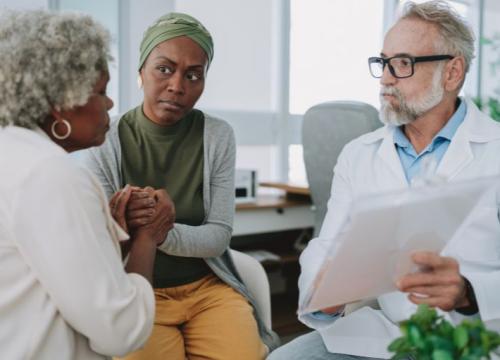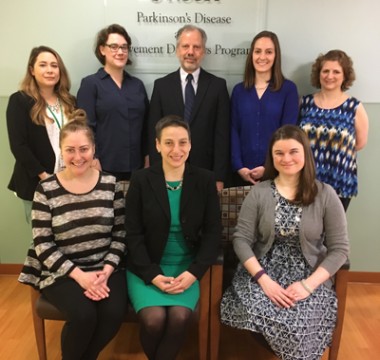Parkinson's Disease and Insulin Resistance

All Science News articles summarize a research study and are not an official opinion, endorsement or position of the Parkinson’s Foundation’s.
Insulin resistance (IR) is a precursor to type-2 diabetes (T2D) – a disease that occurs when your blood glucose (blood sugar) is too high. First suggested in the 1960s, a growing number of studies are finding links between Parkinson’s disease (PD) and T2D. And contrary to popular belief, you needn’t be overweight to have IR. In fact, having IR usually has no symptoms – which is why it often goes undetected. While researchers don’t fully understand what causes IR, we do know that left unmanaged, T2D can lead to serious problems such as heart disease, stroke, nerve damage, eye disease, gum disease, foot problems, bladder problems, sexual problems – and, may possibly negatively impact the course of PD.
A recently published study in the Journal of Parkinson’s Disease titled, “High Prevalence of Undiagnosed Insulin Resistance in Non-Diabetic Subjects with Parkinson’s Disease” (Hogg et al., 2018), sought to determine how common IR was in non-diabetic people with PD. A battery of motor, non-motor, cognitive, and quality of life assessments were conducted. Other information gathered included height, weight, and Body Mass Index (BMI), as well as lab tests for fasting plasma insulin (the amount of insulin in your blood prior to eating a meal), fasting plasma glucose (the amount of glucose in your blood prior to eating a meal) and HbA1c (a measure used to estimate average blood glucose levels over a period of months). The study participants’ HOMA-IR was also calculated. HOMA-IR, which stands for Homeostasis Model Assessment for Insulin Resistance, is a mathematical equation that estimates steady state beta cell function (beta cells store and release insulin) and insulin sensitivity – which takes both fasting plasma insulin and fasting plasma glucose into account.
Results
- Study participants’ IR status (whether they had or didn’t have insulin resistance) did not significantly impact motor, non-motor, cognitive, or quality of life assessments in this study group.
- The HOMA-IR revealed that nearly 60% (90 out of 154 participants) of the non-diabetic study participants may have undiagnosed insulin resistance – despite having normal blood sugar levels.
- Higher BMI (being overweight or obese) was associated with increased IR.
- The HOMA-IR also revealed that a substantially higher percentage (41%) of their lean study participants had IR, as compared to healthy adults without PD.
What Does This Mean?
This study suggests that nearly two thirds of non-diabetic people with PD may be insulin resistant, despite having normal blood sugar, and in some cases, despite being lean. Thus, the big take-away from this study is that people with PD may want to have a more sensitive insulin test conducted, such as the HOMA-IR, to see if they have undiagnosed insulin resistance. There are several other IR tests as well. Which of these tests, or combinations thereof, might be best to evaluate a person’s IR is something to be discussed with one’s health care provider.
Another important take-away (although not specifically addressed in the Hogg et al. (2018) study), is that there are an increasing number of studies suggesting that IR negatively impacts dopamine functioning in the brain. Parkinson's symptoms, including tremors, stiffness, and slowness of movement, are caused by a lack of dopamine in the brain. This is particularly noteworthy for two reasons: One, the cornerstone of therapy for PD is the drug levodopa (also called L-dopa). Levodopa works by converting into dopamine and replenishing the brain's reduced supply; straight dopamine has difficulty crossing the blood/brain barrier. Two, IR is thought to precede the development of T2D by 10 to 15 years. Thus, having advanced notice of possible IR has great value, as IR is usually reversible. And while the jury is still out as to whether – and to what extent – having IR increases one’s risk for developing PD, taking proactive steps to mitigate one’s risk for developing T2D has profound long and short-term health benefits.
Learn More
The Parkinson’s Foundation believes in empowering the Parkinson’s community through education. Learn more about the connection between diabetes and Parkinson’s in the below Parkinson’s Foundation recourses or by calling our free Helpline at 1-800-4PD-INFO (473-4636).
- Substantial Matters: Episode 21: What Other Conditions Are Related to Parkinson's
- Parkinson’s Today: What’s Hot Medication Edition: Exenatide and Gocovri
- Parkinson.org: Diet & Nutrition
Related Blog Posts





 However, we still don’t have biomarkers, such as a blood test, that allows us to assess PD progression and test promising therapies in people with PD. Therefore, our best opportunity to test a new potential disease modifying therapy is to see if it can slow progression of PD signs and symptoms in people who were recently diagnosed with early PD and who are not taking symptomatic medications (like levodopa, dopamine agonists, amantadine, or MAO-B inhibitors).
However, we still don’t have biomarkers, such as a blood test, that allows us to assess PD progression and test promising therapies in people with PD. Therefore, our best opportunity to test a new potential disease modifying therapy is to see if it can slow progression of PD signs and symptoms in people who were recently diagnosed with early PD and who are not taking symptomatic medications (like levodopa, dopamine agonists, amantadine, or MAO-B inhibitors). However, if the proposed time period to test the new medication is too long, many patients will need symptomatic treatment, and researchers will lose their ability to monitor clinical disease progression. Therefore, most trials of potential disease slowing medications in early PD observe patients for about six months to a year.
However, if the proposed time period to test the new medication is too long, many patients will need symptomatic treatment, and researchers will lose their ability to monitor clinical disease progression. Therefore, most trials of potential disease slowing medications in early PD observe patients for about six months to a year. This article was written by Robert A. Hauser, MD, MBA, University of South Florida Parkinson's Disease and Movement Disorders Center, a Parkinson’s Foundation Center of Excellence. Dr. Hauser’s primary research interest is in the development of new medical and surgical treatments for Parkinson's, tremor, tardive dyskinesia, dystonia, and restless legs syndrome.
This article was written by Robert A. Hauser, MD, MBA, University of South Florida Parkinson's Disease and Movement Disorders Center, a Parkinson’s Foundation Center of Excellence. Dr. Hauser’s primary research interest is in the development of new medical and surgical treatments for Parkinson's, tremor, tardive dyskinesia, dystonia, and restless legs syndrome. 














